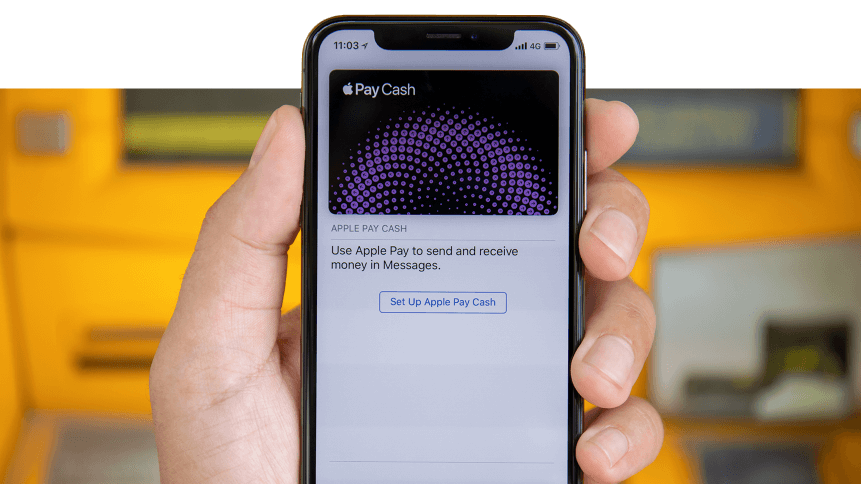Is your digital transformation strategy a digital check or digital wallet?

Look at how the world at large has transitioned into a digital age, and it becomes apparent that much of what we might consider digital transformation is just taking something we’ve done before and making it a bit more modern.
The ‘digital check’, for example, is in its principal concept, not much different from traditional paper checks. Apart from the fact that it can be filled out on a keyboard and exchanged online, it is a digital interpretation of a centuries-old way of doing things — we can hardly call that ‘transformative’.
This was just one analogy presented by Tom Goodwin, EVP Head of Innovation at Zenith and a global marketing industry influencer at eCommerce Expo in the UK capital last week.
Here, Goodwin scrutinized current perceptions and of technology and our progress with its application in a keynote session seeking to bust digital transformation ‘myths’. He urged organizations across industries to (basically) get more excited about technology and exploit the vast, untapped potential at our fingertips.
Technological stasis
The digital check analogy neatly summed up how many companies approach digital transformation— that is, taking something we’ve done before and putting it in a “contemporary-looking frame”.
In stark contrast (and staying in the field of payment technology metaphors), a digital wallet— which allows you to process transactions in real-time— has “extraordinary” potential, said Goodwin.
“You can have an app that just lists every single item you’ve ever bought— it could start suggesting items to buy based on your prior purchase experience. It could keep the receipts that you have for the electronic items that you have, for example, and remind you when your warranties are about to expire.”
The point is— whether it’s online coupons which customers print themselves; iPads added to classrooms which haven’t changed fundamentally since the 19th century; e-commerce websites which present products in a catalog; items that have never been on shop shelves shipped in branded packaging; TV ads being used on YouTube— few companies have fundamentally changed their approach, despite consumers’ buying habits changing dramatically.
“My definition of digital transformation is very much rooted in this idea of rethinking technology— it is rooted in understanding what it will mean, and how it comes together,” said Goodwin.
“But it’s primarily focused on how a company can change the assumptions it’s made before; change the limitations it puts on itself; change the muscle memory that all experts have, and it gets them to really rethink what is possible.”
From approaches to products, services, pricing, business models and customer service, there is lack of real applications of the full disruptive potential that digital technology presents today— not just in the forthcoming ‘age of 5G’ or ‘Industry 4.0’.
“We talk about these technologies as if, somehow, when it comes along, we will get to grips with it quickly and we will do things that are exciting that we can’t do today,” Goodwin said.
“Actually most of the world around can be vastly improved by everything we already have.”
The disruptive few
A comparative handful of companies are doing things differently, training themselves out of the ‘muscle memory’, and generating amazing competitive advantages as a result.
In the food delivery space— which has become the main source of revenue for many physical restaurants around the world— companies like Deliveroo and UberEats are reimagining business models with ‘dark kitchens’.
These low-rent, off-site spaces are utilizing new technologies for food preparation, like automation and data-driven optimization to maximize delivery order volume and speed, and ultimately platform revenue.
Meanwhile, Netflix has broken the linearity of visual media enforced by broadcasting schedules— no longer do episodes need to be the same length, with natural ad break pauses and a story that entices the audience back after the break. The company has changed everything about the TV and film industry.
YOU MIGHT LIKE

Most employees don’t get ‘digital transformation’
Google Lens now lets users take an image grab of anything around them, such as a pair of sneakers, and within a few clicks they can buy the exact model of any product that it’s able to recognize.
Building for the future
These developments by a small few across various industries are the “kind of thing you can only do when you realize quite how merged and how augmented our worlds are today,” said Goodwin.
“You can only do this when you’re building for the future rather than modifying from the past.
“What new products or services can we now make, because we now understand more about how people behave? How can we make money in different ways? How can we help each other out? How can we come together as a society? How can we do the best thing for the planet?
It is “an incredible time” to work for any company with the “audacity, comfort and confidence” to ask these questions, Goodwin told the audience.
My big hope for movie pass, wework, Fitbit, GoPro, Uber, Blue Apron etc is at some point we are going to stop assuming that these people have any idea what they are doing, and regain faith in our own judgement, rather than think they are smart people who see something we don’t
— Tom Goodwin (@tomfgoodwin) October 1, 2019
“I think we need to get really, really comfortable with technology,” Goodwin told leaders at eCommerce Expo.
“We need to understand it enough to discuss it confidently. But I think our ‘master and servant’ always has to be people. When you look at some of these direct-to-consumer brands, people look at them because they’re modern and they’re funky.
“The one thing that they do really well is they just seem a little bit more communicative. They seem to be making things that we want— they seem a bit more humble, a bit more honest.
“There’s so much to be done just by making choices easy.”
When it comes to tackling digital transformation, if your company is the ‘paper-check-being-digitized business’, Goodwin said, “it’s going to be a boring job”.








